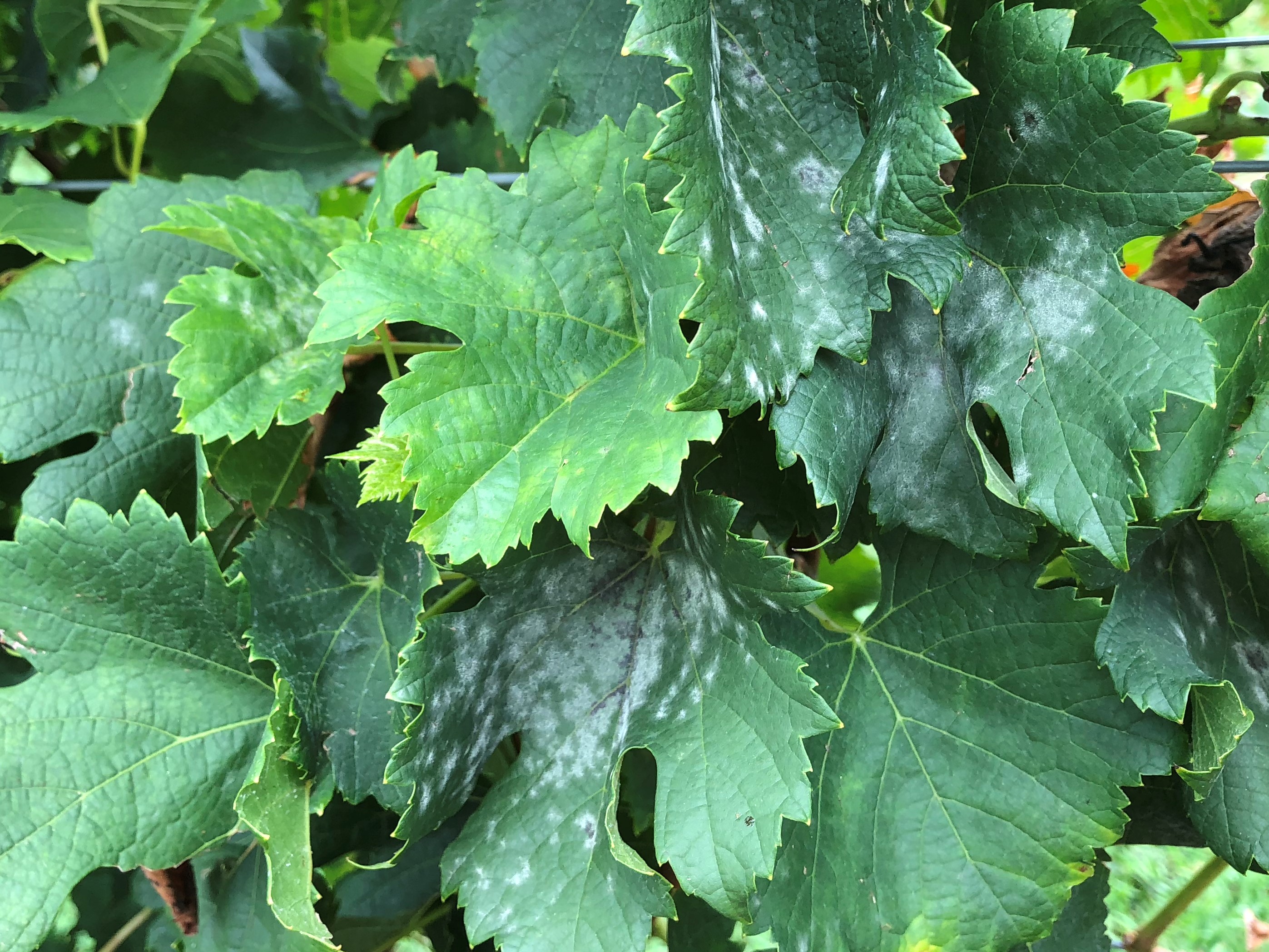-
Brannen, Phillip M.
Powdery mildew resistance to QoI and DMI fungicides in Georgia vineyards
Summary
Georgia’s wine grape industry is relatively young and fragile, but wine grapes are contributing significantly to the Georgia economy. Many grape species and hybrids share one significant issue in common – susceptibility to a disease called powdery mildew. Powdery mildew is a difficult to control disease in Georgia grapes, and this is true for most if not all of the Southeast. Powdery mildew is caused by the fungus Erysiphe necator. Though powdery mildew is an important disease for grape growers worldwide, the southeastern environment is perfect for disease development – generally humid for much of the growing season. To minimize powdery mildew and other diseases, grape growers spray fungicides throughout the season and even after harvest (to protect leaves). Due to the season-long infection potential of E. necator, vineyard managers may employ as many as thirteen to seventeen powdery mildew sprays in any given growing year. Because of the numerous applications of fungicides applied, resistance can readily develop to different chemical classes utilized to control powdery mildew. A survey of fungicide sensitivity was performed on powdery mildew isolates from north Georgia, and results indicated that quinone outside inhibiting (QoI) fungicide resistance is widespread among E. necator populations. In addition, resistance to demethylation inhibitor (DMI) fungicides was confirmed at the University of Georgia Research and Education Center in Blairsville, GA. Efficacy of fungicides were tested for powdery mildew control at the research station, and in these trials, fungicides separated into three efficacy categories: high efficacy, good efficacy, and no or limited efficacy (QoI and DMI fungicides). The Blairsville trial indicated for the first time that the demethylation inhibitor fungicides have also potentially developed resistance, and 2019 surveys will test for this as well. A trial was also conducted to review the efficacy of a sulfur fungicide, as sulfur does not develop resistance; though an older fungicide, the utility of this fungicide has not been fully tested in Georgia. As a result of surveys and field trials, producers are now starting to receive critical information they need to prevent them from wasting money on fungicides that no longer have activity, while also providing better disease control and better grape production with higher wine quality.
Situation
To minimize powdery mildew, caused by the fungus E. necator, grape growers spray fungicides throughout the season and even after harvest (to protect leaves). Due to the season-long infection potential of E. necator, vineyard managers may employ as many as thirteen to seventeen powdery mildew sprays in any given growing year. Because of the numerous applications of fungicides applied, resistance can readily develop to different chemical classes utilized to control powdery mildew. Spraying fungicides with the same single-site mode-of-action active ingredient repeatedly selects for individuals who are less sensitive. These less sensitive individuals and their progeny remain in the vineyard and cause more damage – often as if no fungicide had been applied. Fungicide resistance in E. necator is well studied for many classes of fungicides and a variety of geographic locations. However, a study of fungicide resistance had not been conducted in Georgia.
Response
A survey of fungicide sensitivity was performed on powdery mildew isolates from the northern grape-growing region of the state. Samples of powdery mildew were collected from multiple commercial Georgia vineyards and tested for genetic mutations known to confer resistance. Through a national cooperative grant with Washington State and the USDA, the presence of these mutations was evaluated for samples on DNA isolated from Georgia powdery mildew samples. Results indicated that QoI resistance is widespread among E. necator populations, and DMI resistance is a potential concern as well. In addition to field surveys for powdery mildew resistance, efficacy of multiple fungicides were tested for powdery mildew control at the University of Georgia Research and Education Center in Blairsville, GA. In this trial, fungicides separated into three efficacy categories: high efficacy, good efficacy, and no efficacy (QoI and DMI fungicides) – essentially the same as an untreated control. This trial clearly documents field resistance of powdery mildew to the QoI fungicides and confirms the lack of activity by these fungicides in most sites in Georgia; in addition, this provides the first report of DMI resistance in grape powdery mildew in Georgia.
Impact
As a result of vineyard surveys and field trials conducted in 2019, we now know that resistance of powdery mildew, a devastating disease of grapes in Georgia, to the quinone outside inhibitor (QoI) fungicides is widespread in the northern vineyards, and these fungicides no longer control powdery mildew in many locations. Rotation among all active chemical classes will require producers to purchase multiple chemicals that will be utilized only once per season, but alternation of chemical classes is critical to maintaining these fungicides for years to come. In addition, sulfur will need to be utilized more effectively in the future, and additional studies will be conducted to develop the best-management programs for powdery mildew going forward. We have already essentially lost the QoIs, and we may be losing the DMIs. We simply can’t afford to lose more fungicide classes if we are to manage this aggressive disease in the future. Producers are now receiving the critical information they need to prevent them from wasting money on fungicides that no longer have activity, while also providing better disease control and better grape production for higher wine quality.
State Issue
Plant Production
Details
- Year: 2019
- Geographic Scope: Multi-State/Regional
- County: White
- Location: Georgia Mountain Research and Education Center, Blairsville
-
Program Areas:
- Agriculture & Natural Resources
Author
Collaborator(s)
CAES Collaborator(s)
- Eason, Nathaniel Paul
- MacAllister, Clark
- Scaduto, John Joseph
- Williams, Jacob Paul
Non-CAES Collaborator(s)
- Michelle Moyer
- Walt Mahaffee
Research Impact

